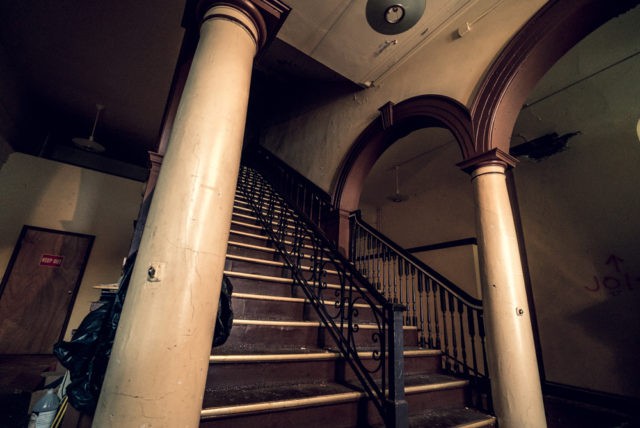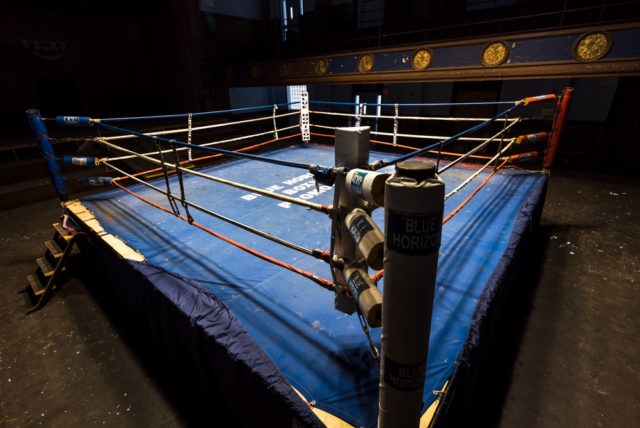The Blue Horizon boxing venue can be recognized by many as one of the locations for the Rocky films. But this site has a history that predates these famous movies, dating back to its construction in 1863.
In that year, real estate developer Richard Dobbins acquired a plot along North Broad Street, Philadelphia, Pennsylvania. By 1865, three four-story houses had been built, all in the style of the Second Empire.
This is an architectural style that dates back to the second half of the nineteenth century, which employs elements that were popular during the era of the Second French Empire.
The original purpose of these houses was to home the nouveau riche.
The first registered residents appeared in 1881, after which the houses were inhabited by various people, including the president of the Pennsylvania Salt Production Company and Gustav Schwarz, one of four brothers who owned toy emporiums in Baltimore, Boston, New York City, and Philadelphia.
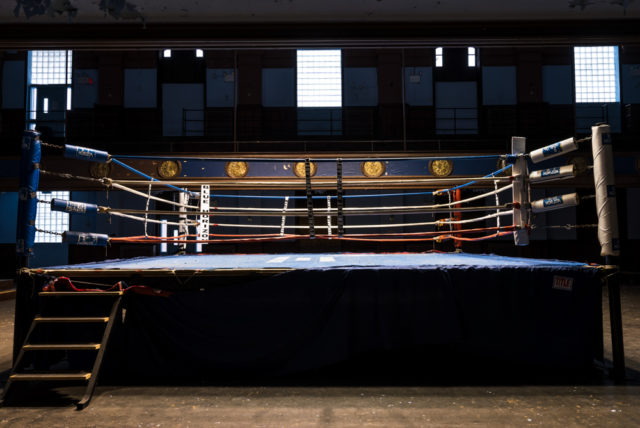
However, in 1914, the houses were sold to the Loyal Order of Moose, a fraternal organization founded in 1888 in Kentucky and led by James J. Davis. The Moose organization bought the property to create Lodge No. 54.
In 1914, an architect from Philadelphia, Carl Berger, added a ballroom, an auditorium, and a bar to the building design. In 1920, Lodge No. 54 consisted of 20,000 members, and by the end of the 1920s, this number had doubled.
The first two professional boxing matches took place on March 1 and 28, 1938. The second fight featured the heavyweight boxer Willy Reddish, who would go on to coach and train both Sonny Liston and Joe Fraser.
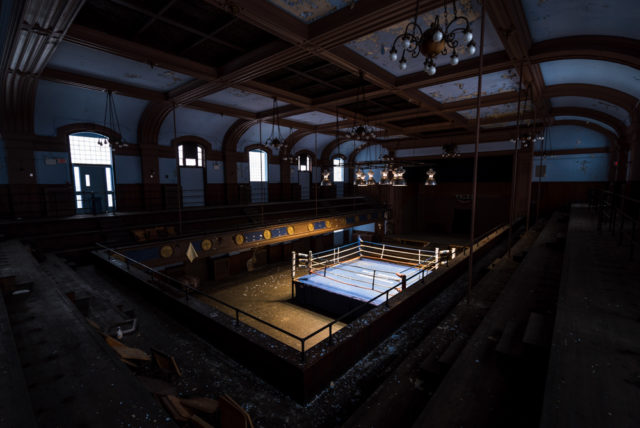
The number of Lodge members continued to increase, and plans were made to expand the building. However, these plans had to be abandoned when the Great Depression swept through the nation and Lodge No. 54 was forced to close.
After that, the building remained empty until 1961. That year, Jimmy Toppi Sr., one of the founders of Jimmy Toppi Enterprises, decided to purchase the vacant building for $85,000. He named the building The Blue Horizon after the song Beyond the Blue Horizon from the 1930 movie Monte Carlo.
In 1961, Jimmy Toppi began to repurpose the building into a venue for boxing matches. On November 3, 1961, the first boxing match was held between George Benton of Philadelphia and Chico Corsey of Chester.
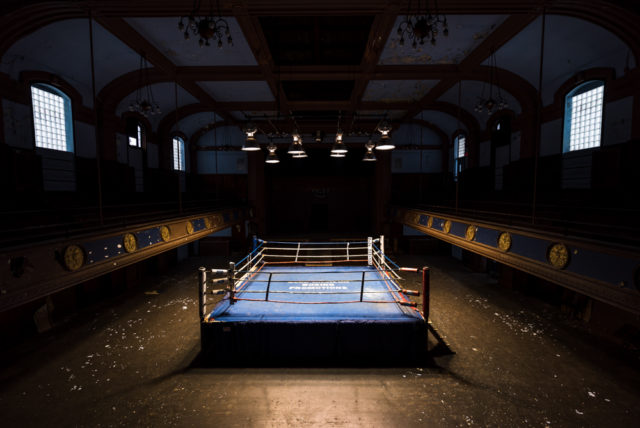
These matches were brought to the public by means of a grant from Madison Square Garden secured by promoter Marty Kramer. He managed to organize more than 30 shows between 1961 and when he left in 1963.
Taking Marty Cramer’s place was promoter Herman Taylor. He held two fights in 1963 and one in 1964, both of which were broadcast on national television.
Featuring boxers such as Curtis Cokes, Henry Hank, Stanley Hayward, Harold Johnson, Jose Stable, and Dick Turner, it’s no wonder that attendance records were broken when 1,343 spectators crammed themselves into the stands.
There was a break of three years before The Blue Horizon was used as a venue again, when promoter J. Russell Peltz organized a two-week show in September 1969.
After that, he sought out talent from local boxing clubs and organized bi-weekly shows. In his stint at The Blue Horizon, he promoted 31 shows.
Impressively, Peltz was able to break Taylor’s previous record at his very first show, where attendance was recorded as being 1,606 spectators.
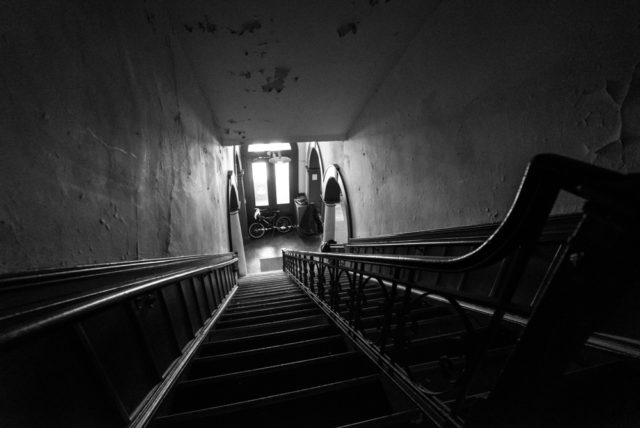
In 1971, Peltz decided he wanted to work at larger sites, so he left The Blue Horizon – although it seemed he couldn’t stay away for long.
Three years later, he returned to The Blue Horizon and worked there from 1971 until 2001. Even after he left, he still returned to promote four more cards – one in 2004 and three others in 2009.
The boxing club was sold in 1994 to a partnership consisting of Vernoca Michael, Carol Ray, and Carol Whitaker.
Four years later, Vernoca Michael became the first licensed female African American boxing promoter in Pennsylvania. She promoted matches with famous fighters such as Eddie Chambers, Youssef Mack, and Lajuan Simon.
On December 2, 1997, The Blue Horizon hosted its first world title match. This was one of Peltz’s promotions and involved Charles Brewer defending his International Boxing Federation super middleweight crown.
The fighting club continued to grow through a regular series of fights on Tuesdays. In 1999, The Blue Horizon was declared the best boxing gym in the world according to the magazine The Ring.
Governor Ed Randall named Vernoca Michael one of the top 50 women in Pennsylvania.
At that time, she was working on a project to turn The Blue Horizon into a cultural center for the neighborhood with the hope that meetings, weddings, cabarets, and other events would be held there.
The Blue Horizon allegedly starting facing tax issues, and it was either that or a licensing violation which resulted in its doors closing for good in June 2010.
The development company Mosaic Development Partners from West Philadelphia became interested in the site, hoping to turn it into a hotel, a restaurant, a fitness center, and a jazz bar.
In January 2011, the company received a grant of $6 million to begin the construction of the complex that was estimated to cost $18 million.
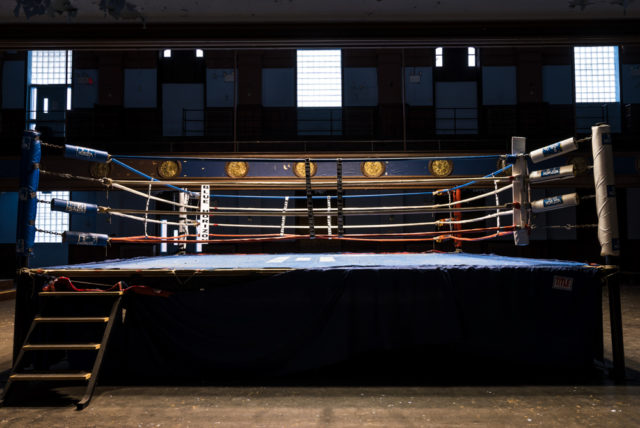
Initially, the development company announced its intentions to turn the building as a night club and build the hotel next to it.
However, an announcement was made in July 2013 that the building would be demolished to free up the site for parking space.
In February 2015, the Department of Licenses and Inspections of Philadelphia granted the new owners permission to demolish the interior of the building.
The project was temporarily suspended due to a lack of funds.
A month later, the front facade of The Blue Horizon was added to the Philadelphia Register of Historic Places.
Consequently, a revised $22 million proposal was put in to demolish everything except the front of the building and construct a five-story micro-hotel behind it.
In the spring of 2016, an auction was held where hundreds of items from the club were sold. Sale items included original posters for matches, wooden seats, a shower door, and the bell.
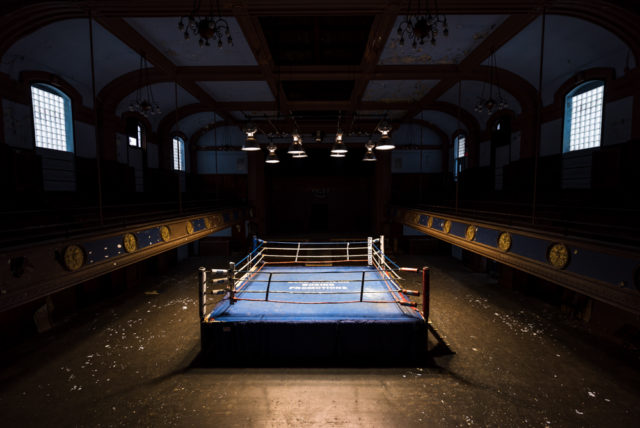
While at least part of this historic building will be preserved, local residents had mixed feelings about the plan to turn The Blue Horizon into a hotel.
Some residents believed that the project would increase the value of real estate in the area. Others who remember The Blue Horizon when it was a boxing venue were disappointed with the suggested changes.
There were also those who think that the new hotel will help preserve the building itself, as well as attract new visitors and create more jobs.
This boxing venue, which holds fond memories for many, also appeared in the Rocky V movie. It was the setting for some of the scenes where Rocky fights Tommy Morrison.
In addition, The Blue Horizon’s ring was used to film the boxing scenes in the movie Annapolis, which starred James Franco and Tyris Gibson.
Check out Architectural Afterlife which is created by Cleveland photographer Johnny Joo. You can also find useful information about what kind of gear he uses for his photography under each of his posts.
Big thank you to Johnny Joo for giving us a chance to share his photographs with our readers.
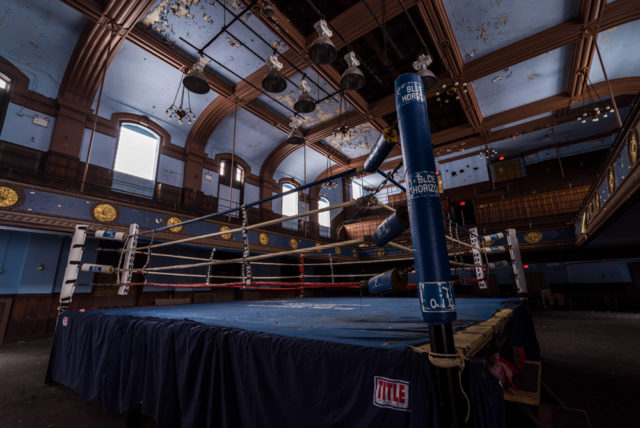
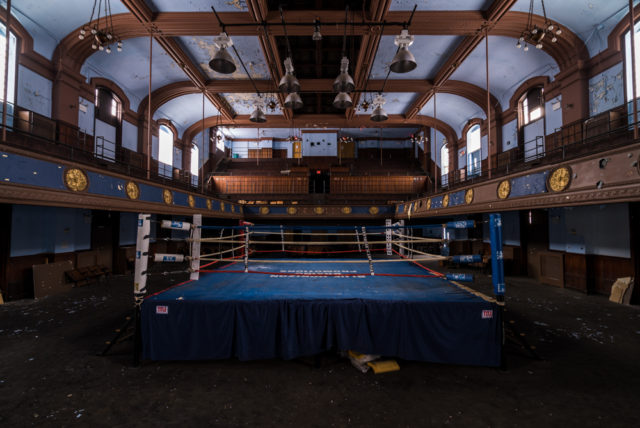
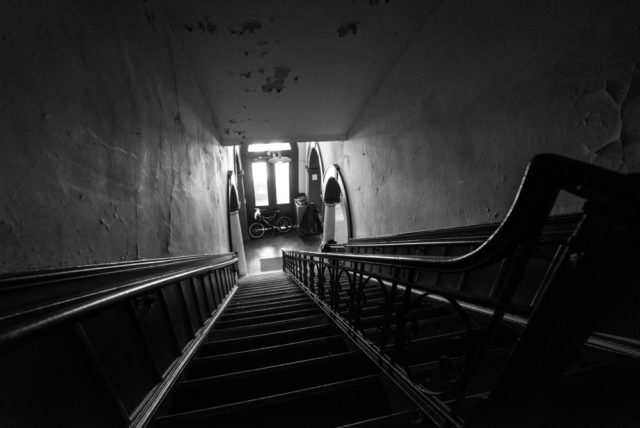
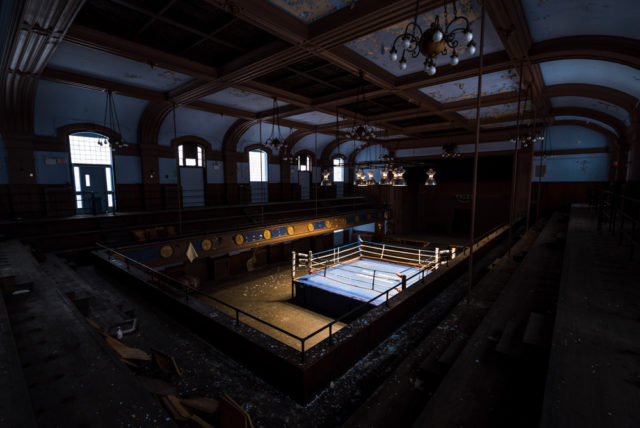
Another Article From Us: Abandoned Patarei Sea Fortress Prison, Tallinn
